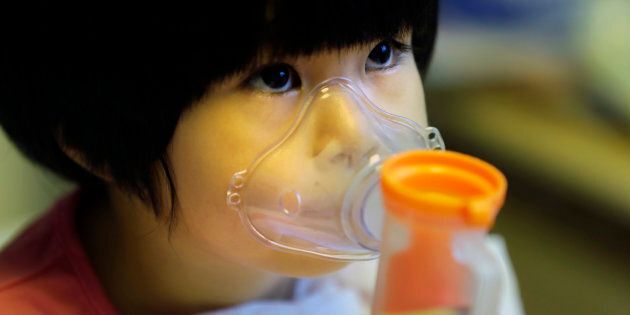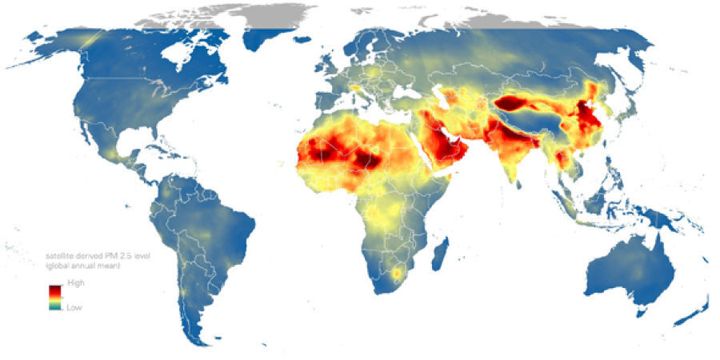
A worldwide study of the harmful effects of pollution on children shows more kids under five die from pollution-related illnesses in South East Asia and the Western Pacific than anywhere else.
The UNICEF study also used satellite data to show areas permanently shrouded in smog to show 300 million children live in areas with extremely toxic levels of air pollution.
Of that number, the study found 2 billion children lived in areas where pollution levels exceed minimum air quality standards set by the World Health Organisation.

What's worse, every year WHO estimates nearly 600,000 children under the age of five die from diseases caused or exacerbated by the effects of indoor and outdoor air pollution.
Queensland University of Technology Institute of Health and Biomedical Innovation associate professor Adrian Barnett told The Huffington Post Australia the lethal effects of air pollution weren't easily understood.
"Your air quality is crucial to health -- it seems so obvious that the stuff that we breathe is important to overall health but sometimes it's not so easily demonstrated," Barnett said.
"If you think about poor quality drinking water, you can see the cause and effect and very readily recognise the diseases caused by it.
"With air pollution, there can often be a very long lag and unless it's very black and sooty, you can't see or smell so it kind of creeps up on us.
"When people die of a heart attack or an asthma attack, there's not that direct cause and effect to determine it was caused by a lifetime exposure to air pollution."
Why does pollution affect children more than adults?
Children breathe twice as quickly as adults, and take in more air relative to their body weight.
Their immune systems are weaker. Their brains are still developing. Their respiratory tracks are more permeable and thus more vulnerable.
Airborne pollutants can more easily enter and irritate children's lungs, causing and life-threatening disease. These tiny particles can also cross the blood-brain barrier, which is less resistant in children, causing inflammation, damaging brain tissue, and permanently impairing cognitive development.
The particles even can cross the placental barrier, injuring the developing fetus when the mother is exposed to toxic pollutants.
In Asia, 1.22 billion children live in areas where outdoor air pollution exceeds international limits.
In South East Asia, satellite data showed the worst-affected areas were Laos, northern Thailand and China near Shanghai.

As for how the situation can be improved, the UNICEF report recommended a push to reduce air pollution, better air quality monitoring, keeping children away from harmful sources and improving children's overall health so they were less susceptible to illness.
Barnett, however, said it wasn't easy for families in Asia and the Pacific to avoid pollution.
What causes air pollution?
Damaging pollution can be caused by fossil fuel combustion like in vehicles, industrial manufacturing, burning biomass for cooking, light and warmth and waste-burning.
Natural sources include dust, bacteria and volcanic eruptions.
"It's very hard, the quality of the air is generally only able to be controlled by governments. Individuals can't do much about it," Barnett said.
"For internal pollution, you could install a flue, but if a neighbour's burning terrible stuff, there's not much you can do."